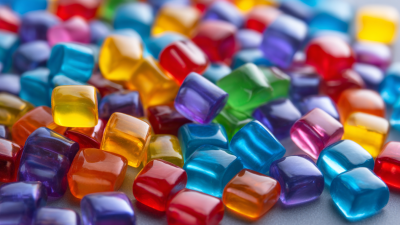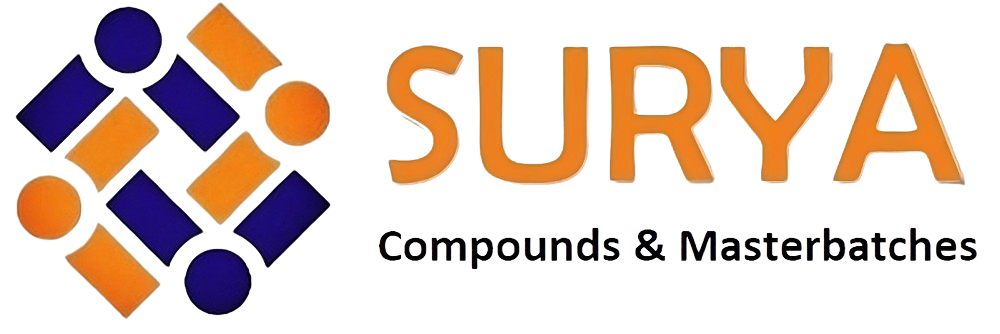- Home
- Masterbatch
- Additive Masterbatch
- Anti-Block Masterbatch
- Anti-Fog Masterbatch
- Anti-Microbial Masterbatch
- Anti-Oxidant Masterbatch
- Anti-Static Masterbatch
- Anti-Termite & Rodent Masterbatch
- Desiccant / Anti-Moisture Masterbatch
- Optical Brightener Masterbatch
- Flame Retardant Masterbatch
- Slip Masterbatch
- Polymer Processing Aid (PPA) Masterbatch
- UV Masterbatches
- VCI Additive Masterbatch
- Filler Masterbatch
- Black Masterbatch
- White Masterbatch
- Color Masterbatch
- Mono Masterbatches
- Special Effect Masterbatches
- EVA Masterbatch
- OXO Biodegradable Masterbatch
- XLPE Masterbatch
- Cable Masterbatch
- Nylon Masterbatch
- TPU Masterbatch
- Additive Masterbatch
- Compound
- Market
- Company
- Blog
- Contact Us
10 Essential Tips for Choosing the Right Polyethylene Masterbatch for Your Projects
In the rapidly evolving world of plastics, selecting the appropriate polyethylene masterbatch for your projects is a critical decision that can significantly impact product performance and cost efficiency. According to a recent report by Smithers Pira, the global digital color masterbatch market is projected to reach $4.25 billion by 2025, driven by the increasing demand in the packaging industry. Within this market, polyethylene masterbatch plays a pivotal role, providing not only coloration but also enhanced properties to plastic materials.
Industry expert Dr. Emily Chang, renowned for her extensive research in plastic additives, emphasizes, "The right polyethylene masterbatch can not only elevate the aesthetic appeal of a product but also improve its functional characteristics, such as UV resistance and durability." As project managers and product developers navigate the complexities of material selection, understanding the essential criteria for polyethylene masterbatch becomes vital. This guide outlines the top five essential tips for choosing the right polyethylene masterbatch, ensuring that your final products meet both consumer expectations and regulatory standards.

Key Properties to Consider When Selecting Polyethylene Masterbatch
When selecting polyethylene masterbatch for your projects, it's crucial to consider key properties that will significantly impact performance and suitability. The first aspect to evaluate is the strength and compatibility of the masterbatch with the base resin. A well-matched masterbatch ensures a uniform dispersion and enhances the quality of the final product. Additionally, factors such as the masterbatch's concentration level of additives should be assessed, as this influences both the physical properties and processing behavior.
Another important property is the thermal stability of the masterbatch. This characteristic determines how well the additives will perform during processing and under various temperatures. It is also essential to consider the specific additives included, such as antimicrobial or flame retardants, as they play a crucial role in defining the applications of the polyethylene product. Understanding these properties allows for a more informed choice that aligns with the project's requirements, ultimately leading to enhanced products and greater customer satisfaction.

Understanding Different Types of Polyethylene Masterbatch and Their Applications
When embarking on projects that involve polyethylene masterbatch, understanding the various types available is crucial. Polyethylene masterbatch is primarily categorized into two main types: black masterbatch and color masterbatch. According to the 2022 Market Analysis Report by Smithers Pira, black masterbatch holds approximately 50% of the global market share due to its extensive applications in film, injection molding, and blow molding processes. Its ability to enhance UV resistance, improve mechanical properties, and reduce production costs makes it a favored choice among manufacturers.
Color masterbatch, on the other hand, is gaining traction, especially in sectors like packaging and consumer goods. The same report indicates that color masterbatch is experiencing a growth rate of 5.7% annually, primarily driven by the demand for visually appealing products. Choosing the correct formulation often involves considering the polymer compatibility, the desired color shade, and specific additives for functionalities like anti-blocking or slip properties. Understanding these distinctions allows production teams to select the appropriate masterbatch that can optimize product performance and aesthetic appeal, ultimately impacting the project’s outcome.
Evaluating Color Concentration and Consistency in Masterbatch Choices
When selecting the right polyethylene masterbatch for your projects, evaluating color concentration and consistency is crucial. Color concentration refers to the amount of pigment or colorant present in the masterbatch. A higher concentration can provide vibrant colors, but it may also affect the processing and final appearance of the end product. Conversely, a lower concentration may result in pastel shades, which could be desirable for certain applications. It's essential to align the color concentration with your project specifications, ensuring that the masterbatch delivers the expected aesthetic qualities without compromising performance.
Consistency is another critical factor when choosing polyethylene masterbatch. Consistent color delivery across batches is vital to maintain the quality and integrity of the final product. Variations in color can lead to significant discrepancies in the finished items, potentially affecting brand image and consumer satisfaction. To ensure consistency, consider sourcing masterbatch from reputable suppliers known for strict quality control measures. Conducting tests on small batches can also help assess how well the masterbatch performs in different processing conditions, providing reassurance that your chosen product will meet your project’s color requirements reliably.

Assessing Compatibility of Masterbatch with Your Base Polymer
When selecting a polyethylene masterbatch for your projects, assessing compatibility with the base polymer is crucial. The performance of the final product heavily relies on how well the masterbatch integrates with the base polymer. It is essential to consider factors such as the polymer's melting temperature, viscosity, and polarity, as these can significantly influence the processing behavior and final characteristics of the material. Conducting compatibility tests, such as melt flow rate analysis or thermal stability assessments, can help ensure that the masterbatch and base polymer will effectively blend without compromising the material's properties.
Additionally, understanding the intended application of the product will guide the compatibility assessment. For instance, if the end product requires specific mechanical properties or color consistency, ensure that the masterbatch is designed to enhance these attributes without introducing incompatibility. Collaborating with suppliers who can provide detailed technical data and samples for testing can further facilitate informed decision-making. This proactive approach will not only streamline the production process but also enhance the overall quality and performance of the polyethylene products you are developing.
Polyethylene Masterbatch Compatibility Assessment
This chart displays the compatibility scores of different types of polyethylene with selected masterbatches. The scores range from 1 to 10, indicating the effectiveness of the masterbatch in enhancing the properties of each polyethylene type for various applications.
Cost-Effectiveness: Balancing Quality and Budget in Masterbatch Selection
When selecting a polyethylene masterbatch for your projects, cost-effectiveness is a critical factor that requires careful consideration. Balancing quality and budget is essential, especially in an industry where material costs can significantly impact overall project expenses. The volume cost of filled polyolefins, for example, tends to rise with the inclusion of fillers, which not only increases the density but also complicates the compounding process. Understanding these dynamics allows for better financial planning and can lead to substantial savings when selecting the right masterbatch.
Additionally, the additive masterbatch market is diverse, encompassing various types such as antimicrobial, antioxidant, and flame retardants, which cater to specific application needs, from packaging to construction. Each category comes with its own cost implications, influenced by factors like the choice of carrier resin and associated processing requirements. As organizations strive to meet both technical performance and budgetary constraints, making informed decisions within this market becomes crucial for achieving optimal results without compromising quality.
Related Posts
-

Revolutionizing Repair: Understanding the Science Behind Plastic Fillers and Their Environmental Impact
-

Unlocking the Benefits of Anti Block Masterbatch: Revolutionizing Plastics with Enhanced Performance
-

Unlocking the Future of Plastics: How Anti Block Masterbatch Enhances Packaging Performance
-

Exploring the Fascinating World of Plastic Effects: How They Transform Our Everyday Materials
-

Unlocking the Potential of Filler Masterbatch: Innovations in Polymer Manufacturing
-

Exploring the Future of EVA Masterbatch: Trends and Innovations in Polymer Additives for 2024
